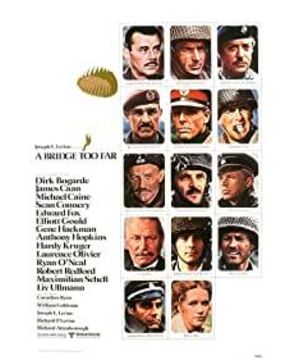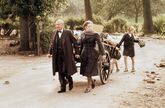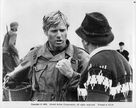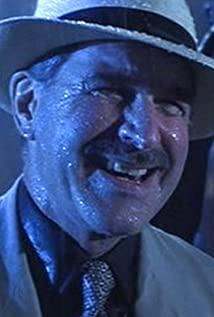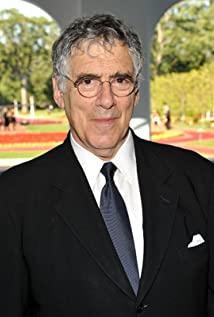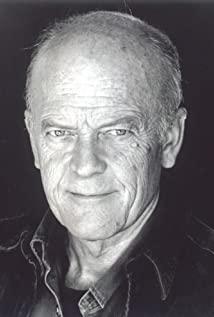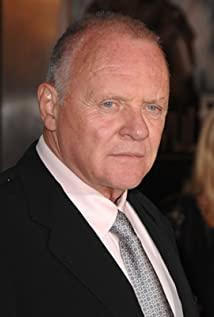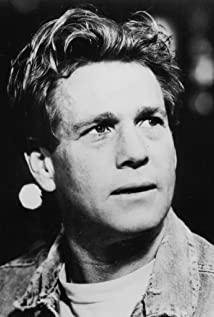This is a travel note written by me on a trip to Arnhem during my work abroad
In the eyes of Chinese military enthusiasts, Arnhem may be more famous than some large Dutch cities. The "Operation Market Garden", which took place in 1944 and is known as the largest airborne operation in the history of human warfare, made the city remembered by history. On June 6, 1944, the Allied forces successfully landed in Normandy and opened the second battlefield. , Optimism gradually spread within the Allied forces. Marshal Montgomery, the British commander who has always been known for his prudence, planned a bold plan codenamed "Operation Market Garden." According to this plan, the Allied forces will seize a series of important bridges across the Rhine, Waal and other rivers, and then penetrate directly into the German hinterland from the Netherlands, thereby achieving the goal of ending European battlefield operations before Christmas in 1944. On September 17, 1944, the US and British Air Forces used almost all of their belongings to launch the largest airborne operation in the history of human warfare. However, due to intelligence errors, the situation on the battlefield seemed to lean towards Germany from the beginning. The British First Airborne Division and the Polish Paratrooper Brigade, which were responsible for capturing the Arnhem Bridge, suffered the most. The British First Airborne Division only had less than 2,000 men to break through. A field commander of the division looked at the Arnhem Bridge and lamented: "That bridge is too far away for us!" And the Arnhem Bridge, which was too far away in the eyes of the Allies, was widely known. Recently, the author visited Arnhem, visited the relics of World War II, and felt the cruelty of war and the preciousness of peace. A "too far" bridge made 90% of the Allied victories come to nothing. Arnhem is a major town in the eastern part of the Netherlands, and the Rhine River winds through the city. According to local elderly people, there were two bridges across the Rhine in Arnhem during World War II. One of them was a highway bridge that could pass heavy vehicles. It was the focus of the battle. In "Operation Market Garden", the Allied forces intended to seize a total of 5 road bridges from Eindhoven to Arnhem. The famous American TV series "Brothers" tells this history. The officers and soldiers of the U.S. 101st Airborne Division landed in Eindhoven. The initial operations have been smooth, but the British First Airborne Division parachuted near Arnhem and wanted to occupy the Arnhem Highway Bridge, but was armed by the German SS. The division’s fierce attack. In the end, the Allied forces occupied the other four bridges. According to Montgomery, the Allied forces won 90% of the victory. However, the Arnhem Highway Bridge was the most important ferry crossing in the eastern part of the Netherlands. The strategic vision of the Siegfried Line of Defense and a leap into the Ruhr Industrial Zone in Germany cannot be realized. Lieutenant General Frederick Browning, then deputy commander of the Allied First Airborne Group Army, was responsible during the operation. Said anxiously: "We may be heading to a bridge that is too far away." Sure enough, the 2nd Battalion of the Parachute Regiment of the British First Airborne Division captured the north entrance of the bridge under the leadership of Lieutenant Colonel John Frost. Soon after, it was counterattacked by the Germans. After more than 600 paratroopers blocked the German army for three days and two nights, after sending out the last telegram of "Exhausted ammunition and food, God protects my king", they launched a hand-to-hand battle with the German army, and the whole army was eventually wiped out. The bridge they desperately protected was not preserved. Later, in order to prevent the Germans from using the bridge, the US Air Force blew it up. After the war, the Dutch restored and erected the bridge on the original site, and the north entrance of the bridge still maintains the vicissitudes of World War II. Today, walking on the pedestrian stairs and sidewalks of the bridge, looking at the bridgeheads on both sides of the north entrance, you can still feel the bloody wind of the war. In 1977, to commemorate the chivalry displayed by Commander John Frost in battle, the bridge was named John Frost Bridge. His name was inscribed on a piece near the north entrance where the paratroopers once stood. On the bronze stele, the inscription reads "I would like to name this bridge after John Forrester, to commemorate the contribution of the soldiers under his leadership to the fight for freedom." There is an Arnhem Battle Information Center near the north entrance of the bridge. The center’s guide told reporters that the battle that took place on the bridge lasted for 3 days. At first, the Dutch thought that they would be liberated soon. They were excited to help the Allies, but what followed was a bloody battle. , Hundreds of local civilians were killed, but they still helped the wounded soldiers fearlessly and provided cover for the Allied soldiers. Although the German army won the war, they also suffered heavy losses. The narrator pointed to the four walls of the information center. On the walls were dictated by British, German, American, Polish and local civilian experiencers. It seemed that they hoped to tell visitors this history from the most objective perspective. "I'm more afraid of the night than ever. We are completely surrounded by the enemy... But after 3 days of non-stop fighting, we are still alive..." This is the dictation of a British army survivor. A local survivor preached, “My mother, brother and sister and I were looking for shelter on the way home from the church. As a result, a shell exploded beside us. My brother was killed and his body lay there. It's a long time." "There are stumps and corpses everywhere, and they are also young people. It's really terrible." said a German survivor. After World War II, veteran associations from the United Kingdom, the United States, Poland and other countries came to Arnhem every year to hold commemorative activities. At the entrance to the north of the bridge, there is a monument to the Battle of Arnhem. It is a stone pillar that was damaged in the battle. The entire pillar is inscribed with " The Great Famine in winter collected more materials from the people in another folk museum named "Arnhem 40-45 War Museum" in the north of Arnhem town, and tried to fully display the battle of Arnhem and even the Netherlands. The situation throughout World War II. Volunteer commentator Nora Nikkinson told the author that the failure of this battle led to the great famine in the Netherlands in the winter of 1944. After the German army paid thousands of casualties, it stabilized the western defense line. In the following eight months, the Rhine became an insurmountable moat for the Allies; and for civilians in the Netherlands and Germany, they ushered in the most difficult days. . "The winter of 1944 was the coldest winter of the war. Because of this battle, Dutch traffic north of the Rhine was completely interrupted. The major cities were in short supply, and the countryside was also the same. In that winter, the entire occupied area starved to death and froze to death at least. 200,000 people. The civilians in Arnhem were even more miserable. They were driven out of the city. All the furniture was transported to Germany for the German civilians. All houses were torn down and blown up. The survivors of the winter famine returned after the war. When I arrived home, I found out that I had nothing." Ms. Nora said sadly. Ribbentrop, then the German Foreign Minister, promised on the day Germany invaded the Netherlands: "Germany has no intention of...infringing upon the territorial integrity of the Kingdom of the Netherlands..." But this is not the case. Germany did not. Thinking of the army of the Kingdom of the Netherlands, under the leadership of Queen Wilhelmina of the Netherlands, made a tenacious resistance. In response, the Germans threatened to blow up the Port of Rotterdam and demanded the Queen's surrender. But after the queen was forced to surrender and go into exile in Britain, the Germans still blew up the entire Rotterdam treachery, which made the Dutch extremely angry. The German occupiers were very panicked about this. With the passage of time and the worsening of the war, the actions of the German occupiers became more and more brutal. In order to cooperate with the Allied Forces' "Operation Market Garden", the Queen ordered the Dutch Railways to hold a general strike in the UK, which received a general response from the railway workers and the resistance movement. But as the Allied forces were frustrated in Arnhem, the German occupying forces began to retaliate frantically. Allied bombings, Germany's prohibition of food delivery from eastern agricultural areas to cities, rail strikes caused supply interruptions, and a more abnormal winter than ever before. Various reasons contributed to the long and tragic winter of 1944. “The only hope of the Dutch at that time was to listen to the Queen’s speech on the radio. She called on the Dutch people to persevere every day.” Ms. Nora said to the author while looking at the photos of Queen Wilhelmina’s speech in the museum. Full of reverence. In order to prevent the Dutch from listening to Queen Wilhelmina’s speech on the "Radio Orange" in the United Kingdom every day, the occupier ordered the confiscating of all radio stations in May 1943. Electric equipment and its accessories and parts, but the Dutch still assemble radios through various methods and listen to the Queen’s speech. Nora showed the author many disguised radios, some disguised as candy boxes and some disguised as oil paintings. The German occupiers did everything possible to undermine the authority of the Queen, but the Dutch people were more loyal to the royal family. In the Allied Cemetery, 1757 young soldiers from the United Kingdom, the Netherlands, Poland and other countries are sleeping. In 1994, the Allied soldiers who participated in the war erected a memorial next to the division of the British First Airborne Division to express their respect to the local people. . The inscription is inscribed "To the residents of Gelderland: 50 years ago, soldiers of the British and Polish airborne troops fought an arduous battle here in order to open the way to Germany and end the war as soon as possible. Although we brought death and destruction , But you never blamed us. This stone stele will engrave our respect for your fearless spirit, especially the women. In that long winter, they risked the death of their family to take care of our wounded... As fugitives and friends brought home, and you will stay in our hearts forever. This kind of friendship will not disappear with our passing." The Allied Cemetery not far from the division is buried in Britain, the Netherlands, Poland and other countries. Including the remains of 1757 soldiers. The monument in the cemetery is engraved with "their names will be immortal." Every September 17th, veterans of the British First Airborne Division and the Polish First Airborne Brigade go to this cemetery to hold commemorative activities. On a plaque at the entrance of the cemetery, the veterans of the Battle of Arnhem paid tribute to the local people who took care of the cemetery under the name "Flowers in the Wind": "This plaque is dedicated to the children here, thank you This cemetery is taken care of with respect every year, and those who rest here dedicated their lives to the cause of freedom." It was dusk when the author arrived at the cemetery, and the sky was drizzling. Even so, there were still many people. Came here to observe in silence. A candle was lit in front of the gravestones of all Polish soldiers in the cemetery that day. On the innermost side of the cemetery, there stands a cross tombstone decorated with a knight’s sword, with the blade facing down and straight into the ground, reminiscent of the song sung by the soldiers of the British First Airborne Division—"We are inserting the enemy The sharp knife of the heart, we are the iron hand that smashes the enemy’s throat, we are the lion that descends from the sky, facing the ferocious wolves around, we are fearless and fearless, we fight in blood!" In the cold rain, the candlelight in front of the cross tombstone Like the fire of freedom and life, it will never go out. Only by staying away from Nazi thinking can we create a peaceful Europe. Unlike the Nazi war criminals who were spurned all over the world, Europeans were very tolerant of ordinary German soldiers in World War II. This is against Germany after the war The thorough reckoning of war crimes has nothing to do with the profound introspection of the entire nation. In Yesselstern, in the province of Limburg south of Arnhem, is the largest war cemetery in the Netherlands. In the 70-hectare cemetery, all German soldiers who died in the Netherlands during World War II were buried. After the end of World War II, almost all German cemeteries in the Netherlands were cleared, and nearly 32,000 German corpses were transferred to Yesselstern Cemetery for burial. On the commentary board in the cemetery, these soldiers were called the victims of the war. This cemetery was established by the Dutch Cemetery Service and handed over to the Federal Republic of Germany on November 1, 1976. It is under the management of the German War Cemetery Committee. You can see wreaths and flowers in the cemetery from time to time. The entire cemetery is well organized, and the cross-shaped tombstones can't be seen at a glance. Although these dead were invaders, they were also victims of Nazi ideology. "To be honest, I don't hate Germans. The German Wehrmacht is only Hitler's pawn. During the Nazi rule in Germany, young people over the age of 18 had to join the army. Many people and many actions were forced to do so. This is war. Nora told the author that with the war and material shortages, the Netherlands must implement the same material rationing system as Germany to ensure Germany's supply. The museum here also keeps the food stamps and cloth tickets of the year. "Many Germans voluntarily donate items with Nazi traces in their homes to us. Germany started the war and paid the price. For Germans, this war must bear in mind that only by staying away from Nazi ideas can peace be created. Europe." "Nazis are freaks of totalitarianism, populism, and non-humanitarianism. We build these war museums to make people understand that they must clearly understand the dangers of Nazi ideology and that peace is hard-won. "Nora said to the author solemnly. 20,000 remains of German soldiers were transferred to Yesselstern Cemetery for burial. On the commentary board in the cemetery, these soldiers were called the victims of the war. This cemetery was established by the Dutch Cemetery Service and handed over to the Federal Republic of Germany on November 1, 1976. It is under the management of the German War Cemetery Committee. You can see wreaths and flowers in the cemetery from time to time. The entire cemetery is well organized, and the cross-shaped tombstones can't be seen at a glance. Although these dead were invaders, they were also victims of Nazi ideology. "To be honest, I don't hate Germans. The German Wehrmacht is only Hitler's pawn. During the Nazi rule in Germany, young people over the age of 18 had to join the army. Many people and many actions were forced to do so. This is war. Nora told the author that with the war and material shortages, the Netherlands must implement the same material rationing system as Germany to ensure Germany's supply. The museum here also keeps the food stamps and cloth tickets of the year. "Many Germans voluntarily donate items with Nazi traces in their homes to us. Germany started the war and paid the price. For Germans, this war must bear in mind that only by staying away from Nazi ideas can peace be created. Europe." "Nazis are freaks of totalitarianism, populism, and non-humanitarianism. We build these war museums to make people understand that they must clearly understand the dangers of Nazi ideology and that peace is hard-won. "Nora said to the author solemnly. 20,000 remains of German soldiers were transferred to Yesselstern Cemetery for burial. On the commentary board in the cemetery, these soldiers were called the victims of the war. This cemetery was established by the Dutch Cemetery Service and handed over to the Federal Republic of Germany on November 1, 1976. It is under the management of the German War Cemetery Committee. You can see wreaths and flowers in the cemetery from time to time. The entire cemetery is well organized, and the cross-shaped tombstones can't be seen at a glance. Although these dead were invaders, they were also victims of Nazi ideology. "To be honest, I don't hate Germans. The German Wehrmacht is only Hitler's pawn. During the Nazi rule in Germany, young people over the age of 18 had to join the army. Many people and many actions were forced to do so. This is war. Nora told the author that with the war and material shortages, the Netherlands must implement the same material rationing system as Germany to ensure Germany's supply. The museum here also keeps the food stamps and cloth tickets of the year. "Many Germans voluntarily donate items with Nazi traces in their homes to us. Germany started the war and paid the price. For Germans, this war must bear in mind that only by staying away from Nazi ideas can peace be created. Europe." "Nazis are freaks of totalitarianism, populism, and non-humanitarianism. We build these war museums to make people understand that they must clearly understand the dangers of Nazi ideology and that peace is hard-won. "Nora said to the author solemnly.
View more about A Bridge Too Far reviews


